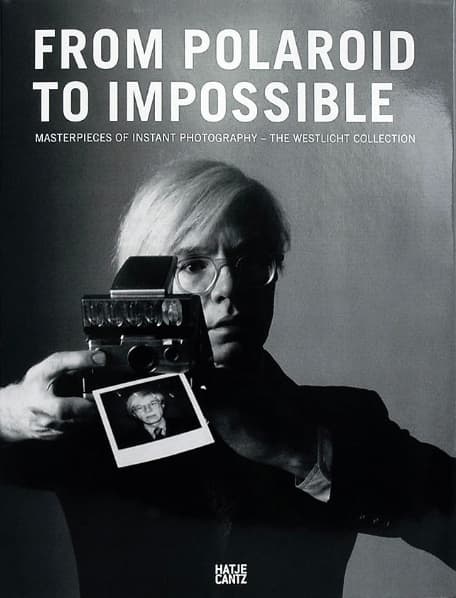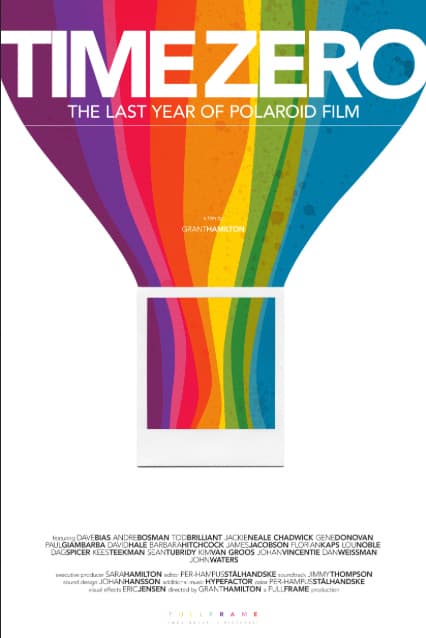
New York Magazine senior editor Christopher Bonanos with a Polaroid SX-70
What makes Polaroid so popular? Why are people still so fascinated?
Well, I think it’s two things. The first is that Polaroid did something that no one else had done – despite Kodak’s attempts. Nobody else sold a photo that developed in your hand.
The fact is, everybody knows what a Polaroid picture is, even now as we approach ten years since Polaroid’s decline, and even decades since Polaroid was at the centre of American photography. Polaroid did something that was incredibly technically complex and made it a part of American life and beyond.
But I think it goes deeper. The mystique now is different. The photograph went through a major transformation when photography moved into the digital age.
A photograph used to be a physical object; you didn’t have it unless you had a negative or a print in your hand. Then it was yours. Now you have a stream of data. You keep an image on your computer or tablet. On my phone I have about a thousand photos. That’s a striking contrast when you consider the image as a physical object. A physical photo feels precious and a digital file feels ephemeral. You can have a digital image in a bunch of places and you can always get it back. Because a digital photo can be reproduced and transmitted infinitely and in a very short time it feels – and I’m hesitant to say disposable – maybe less fragile and less precious.
A digital file certainly feels less one-of-a-kind. Because a Polaroid is made on the spot, and since it was produced in the room with its subject, it can feel special in a whole different way.
If you take a photo of the President and then you hand it to him and then take it away and put it in your pocket it was there. He actually held it. If you keep the image then it becomes an artifact of the moment in which it was made.
What about the imperfections of things such as focus and the development? Does that contribute to the uniqueness?
A lot of people discuss the imperfections of Polaroid, but some Polaroid users get very agitated about this. The reason is that if you put Polaroid film in a good camera with a good lens, then it will produce a really sharp, high quality picture. It’s actually rather fine film.
However, many Polaroid cameras are inexpensive ones with plastic lenses. They’re cheap box cameras that were produced by the hundreds of millions. Their pictures are only okay and in the hands of photo amateurs they can sometimes be less than okay. Hence the idea that Polaroid photography is a low quality amateur medium. It really doesn’t have to be.
However, I agree that given this is most peoples’ perception – especially young people who encountered Polaroid late in its history and didn’t see the kinds of pictures Ansel Adams was making – they are entranced by the imperfection of what they see as an inherent quality of Polaroid. That again is a response to digital quality and ‘perfection’. Then the Polaroid becomes a one-of-a-kind object with flaws.
I’ve read previously that you feel that in many ways Instagram is the continuation of what Polaroid was doing. Can you expand on that?
Instagram is an heir to much of what Polaroid did. If you look at Instagram’s logo it has little rainbow stripes taken from the Polaroid brand. They’re deliberately aware of the legacy they are continuing.
The fundamental quality of Polaroid photography is that you can see the picture on the spot. One of the most basic things you did with a Polaroid is to share it. You take a picture of a friend and you give it to that friend. It’s a slightly different kind of sharing because it’s one-to-one instead of one-to-the-world.
Polaroid-founder Edwin Land wrote at some length about the experience of instant photography and how it drew people together on the spot. If you go to a public place and show someone your camera, take pictures of each other and share them, it creates a bond. You share pictures with new friends. Many of my new friends were made this way.
So sharing images has become a part of Polaroid’s enduring legacy and Instagram takes that to the entire world.

Instagram’s logo pays homage to the Polaroid rainbow
You can learn more of Christopher’s thoughts on Polaroid by visiting his website www.polaroidland.net
Further reading
Instant Light Tarkovsky Polaroids
£16.95, Thames & Hudson, 2006

Russian film-maker Andrey Tarkovsky was an artist capable of capturing transcendent beauty within his films.His Polaroid shots were equally masterful and are a clear demonstration of what can be achieved with instant images.
From Polaroid to Impossible: Masterpieces of Instant Photography the Westlicht Collection
£35, Hatje Cantz, 2011

Published three years after the birth of The Impossible Project, this volume acts as a nostalgic look back at what Polaroid was and hints at what it can be again. This is a real must for any Polaroid aficionado.
Time Zero: The Last Year of Polaroid Film
93 mins, 2012

This documentary, made by Grant Hamilton in the final year of Polaroid’s production, interviews a number of photographers and former employees of Polaroid and asks them one simple question: what does Polaroid mean to you?







